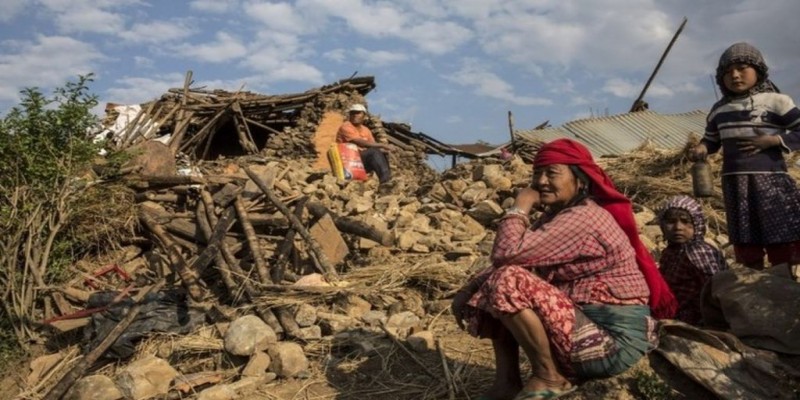
Media Monitoring of #NepalEarthquake - May 5
It has been 11 days since the earthquake and coverage has been diversified from more personal stories and experiences of earthquake endurance to personal observations of relief efforts. There is also positive news coverage such as a baby of a quake survivor being delivered and Jagadamba Steels showing willingness to rebuild Dharahara. Some media agencies have also reported about statistics on severe destruction to schools and individual homes. Major highlights of today’s media reporting are presented below:
Government Efforts
With the cautioning and realization that a great calamity could cause massive disaster, Republica reports about government’s focus on disaster with the Prime Minister thinking on the lines of a separate ministry for disaster management. Republica also reports that the government plans to construct earthquake resistant buildings while reconstructing demolished and damaged houses. It is also encouraging to hear that the Prime Minister has made a strong statement that the Prime Minister will anyhow manage to distribute the relief material, as reported by Setopati.
Reactions
Despite the good initiation by the government in terms of relief efforts, Pahilo Post reports that the victims of Ramche are waiting for relief materials and so far only one organisation have provided relief aid which according to the locals is not enough. With the realization that it has been utterly difficult for rescue efforts, an individual on Twitter opines that drones need to be extensively used in disaster management for surveillance and delivery. Nepali Timeshas also covered a story on Bungmati that despite being only 20 minutes out of the city by car, residents of Bungamati are struggling to house families in temporary shelters. The report states that the town has only 60 tents for 700 families whose brick and mud homes have been completely destroyed. In order to continue the livelihood and gradually come into normalcy, there are also stories on Twitter regarding resuming of brick kilns even with broken chimneys. BBC also reports that due to the earthquake, the Mount Everest climbs are almost impossible. There is also a great story in The Washington Post regarding an endurance test by Peter Hillary after avalanche in Everest. Rudra Bahadur Karki opines that post-search and rescue phase is one that requires an active government presence. He also shares an important lesson from Haiti is that for sustainable rehabilitation and reconstruction, the presence of the government is critical.
Relief Efforts
Tent shortage in Nepal has prompted response from Dot Earth. Ujyalo 90 network has also provided extensive coverage of earthquake. Doctors without Borders has also done an exemplary work in emergency health care – a beautiful story of a baby being delivered by quake survivors. Holiday Experiences has also dedicated a photo blog on World Heritage Sites being destroyed due to massive earthquake in Nepal. USAID through its special factsheet on earthquake has updated its earthquake related activities such as US delegation led by USAID Acting Administrator Alfonso E. Lenhardt visits Nepal and participating in an aerial survey of affected districts and observe the distribution of emergency relief supplies. USAID also informs that the US government has allocated nearly $15 million to support urban search-and-rescue (USAR) operations and the distribution of food assistance, shelter materials, and other critically-needed relief commodities in Nepal. USAID rescue operations have resulted in 16 successful live rescues and the recovery of 179 bodies from collapsed structures.
To mitigate health risks following the earthquake, disease surveillance personnel are participating in GoN–WHO assessments of affected health facilities, and relief organizations have established disease surveillance for acute diarrhea in IDP sites and affected districts, according to the UN. The GoN is also conducting public health messaging to reduce the risk of disease outbreak. Relief organizations are also providing assistance to mitigate the spread of waterborne diseases, including basic shelter support, hygiene kits, water treatment supplies, and safe drinking water to improve conditions for the Internally Displaced Persons (IDPs).
UNICEF reports that more than half a million children are being targeted in an emergency vaccination drive in Nepal – as fears grow of measles outbreaks in the informal camps that have sprung up since the earthquake on 25 April. Oxfam International is also working in 7 districts: 3 in Ktm valley and 4 in Gorkha, Sindhupalchowk, Nuwakot and Dhading. Setopatireports that after the government’s request, foreign rescue teams have begun to return.
Focus on Education and Reconstruction for Rebuilding Efforts
With BBC News report that there is just a single house remaining in Langtang area which was once home to 435 people; 95 percent of schools in Sindhupalchowk and 62 community schools damaged by quake in Kaski in addition to government suggesting people not to reside in some of the apartments after the inspection, there is a greater need to focus on better reconstruction and education for rebuilding efforts.






Comments(0)
No comments found.